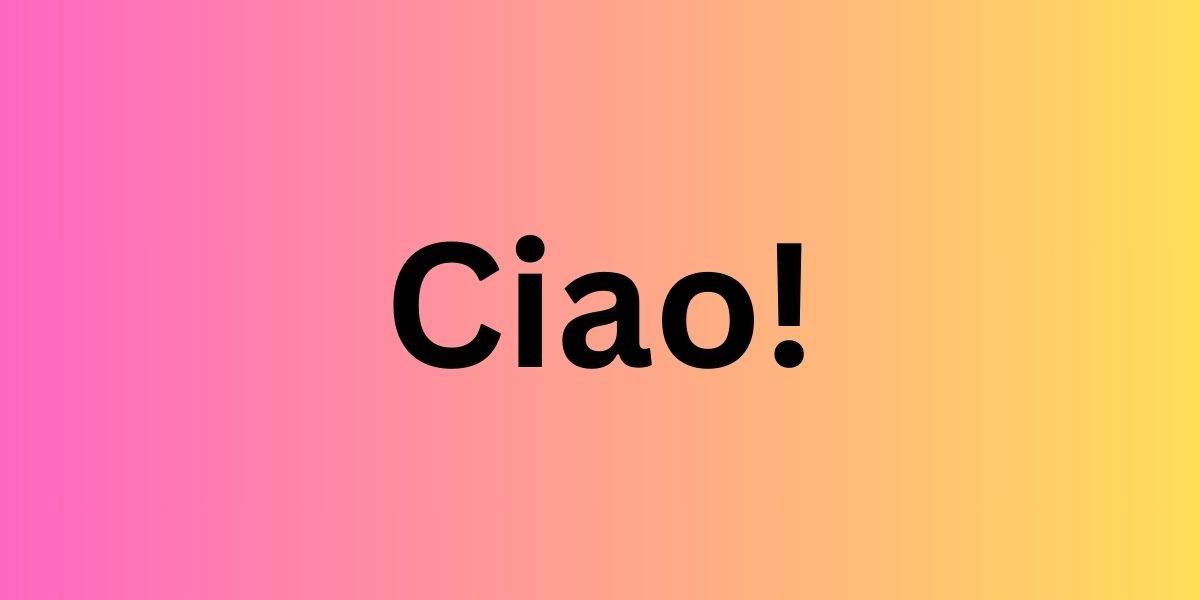Top 10 Easiest Languages to Learn for English Speakers
Interested in learning some of the easiest languages in the world? Here’s a list of the top 10 easiest languages to learn for international students planning to study abroad. Based on FSI Difficult Languages - Category I, the easiest languages are enlisted. Check out the easiest languages to learn and begin your learning now!
Foreign language training can be a task, but what if there are easy languages to learn? There are 7,000 languages in the world, and out of these 7,000, we have listed only the top 10 easiest languages to learn before studying abroad. Want to know which are the top 10 easiest languages in the world? Check out the article, to learn a new language while you plan your education abroad side by side. Also, know how to learn the languages easily in our specially curated sections.
Top 10 Easiest Languages to Learn for English Speakers
Based on the FSI Language Difficulty Ranking, Category I languages take the least learning time. Hence, the Category I languages based on the FSI Difficulty Ranking are the easiest to learn.
Predict your IELTS, TOEFL, and PTE in just 4 steps!
- Afrikaans
- Danish
- Dutch
- French
- Italian
- Norwegian
- Portuguese
- Romanian
- Spanish
- Swedish
Check: Top 10 Best Foreign Languages to Learn for Students
Which is the Easiest Language to Learn?
According to the U.S. Foreign Service Institute (FSI), Language Difficulty Ranking there are several languages categorised based on difficulty. Students who plan to go abroad often ponder over the question - what is the easiest language to learn for English speakers? While language learning is a challenging task, choosing any Category I language can prove beneficial. Let us check out the FSI Language Difficulty Languages based on Category I which takes minimum time for learning and learning a language easily in the following section. Common reference point has been taken for already English speakers who can learn these easy languages in the world:
1. Afrikaans
Afrikaans is a Germanic language which has roots in the Dutch language. The language gained popularity in the 17th century. Afrikaans is very similar to the Dutch language because Afrikaans originated from it. So answering which is the easiest language to learn, let us check how Afrikaans is an easy language to learn for students.
How is Afrikaans easy to learn?
- Like English, Afrikaans also have 26 alphabets (but c, q, r, x and z are rarely used).
- A simple way to learn Afrikaans is to understand the basics, and you’ll be able to form sentences easily.
- Nouns do not change with gender in Afrikaans language just like English.
- Afrikaans have three types of tenses - present, past and future. The changes in tenses are very simple:
- There is no change in the present tense. No suffix no prefix and no change in verb.
- For past in Afrikaans ‘het’ (have/has - past) is used plus a suffix is used before the verb ge+verb.
- For the future tense in Afrikaans, the verb doesn’t change only ‘sal’ is used before the verb.
- Finally, just like the English language, the Afrikaans language also uses the SVO sentence rule.
Average Time to Learn Afrikaans Language: 24 weeks
Language Family: West Germanic (Indo-European)
Total Afrikaans Speakers as of 2024: 8.4 million
Spoken in: South Africa, Namibia
2. Danish
Danish is a 16th-century language which has roots in Old Norse usually spoken by Germanic descendants. Since it has roots in Old Norse, Danish is an easy language to learn. Let us check how Danish is the easiest language to learn for Indian students.
How to learn Danish easily?
- Danish and English are close sisters. Both are Germanic but vary geographically.
- Phonetically Danish and English are similar, hence is not much ado here.
- A lot of loan words have been taken from the English language to construct Danish.
- Alphabets are also very similar in Danish if you are an English speaker.
- Finally, the grammar rules are also more or less similar to one another in English and Danish.
Average Time to Learn Danish Language: 24 weeks
Language Family: North Germanic (Indo-European)
Total Danish Speakers as of 2024: 5.6 million
Spoken in: Denmark
3. Dutch
Dutch is also a Germanic language, and shares similar roots with the English language. Since Afrikaans has its roots in the Dutch language, there are various similarities between the two with a couple of false words also.
How is Dutch easy to learn?
- Dutch and English languages share common Germanic roots, hence, they share a similar vocabulary.
- In comparison to other foreign languages, Dutch language pronunciation is relatively easier for English speakers.
- There are a lot of false friend words in English and Dutch, which are spelt the same but mean differently in the language in context.
- By working on Dutch pronunciations, sentence order and vocabulary students can learn the Dutch language easily.
- Verb conjugations can be challenging, but once students get the hang of it, learning the Dutch language will be easier.
Average Time to Learn Dutch Language: 24 weeks
Language Family: West Germanic (Indo-European)
Total Speakers as of 2024: 25 million
Spoken in: Netherlands, Surinam, Flanders, Belgium, Curaçao
4. French
The French language comes from the Indo-European language family of Romance languages. English and French are from two different language families, yet learning French as an English speaker can be an added advantage for students. Since French is not one of the hardest languages to learn, let us check how students can learn French language.
How to easily learn French language?
- French is all about correct phonetics and pronunciations. So mastering your French alphabet, and phonetics is the first step.
- Get to learn basic French words and practice using them regularly. You can refer to this guide for starters - 150+ Basic French Words for Students
- Buy pocket French books and a dictionary, and translate whenever you need help.
- Download French language podcasts, watch YouTube videos and subscribe to language learning apps.
- Finally, make it a point to revise whatever you have learnt in French so that you don’t forget.
Average Time to Learn French Language: 24 weeks
Language Family: Romance (Indo-European)
Total French Speakers as of 2024: 321 million
Spoken in: France, Canada, Luxembourg + 27 others
5. Italian
Italian is the language for art and food lovers as it is implied. Italian is also a Romance language like French and has its roots back in the 5th century from Latin. However, the Italian language texts began to be written in the 10th century. Let us look at how students can consider learning Italian language in the easiest possible manner.
How to easily learn Italian language?
- With a base as an English language speaker, acing Italian alphabet wouldn’t be a challenge.
- Get to the Italian words, grammar, word order and verbs (and their conjugations), adjectives, nouns and objects to learn.
- Focus on the phonetics of Italian and learn which alphabets are silent and those that aren’t along with the additional vowel set in Italian.
- Begin your practice writing in Italiano because it will help you learn faster, and retain better.
- Finally, ensure you revise regularly and download any language learning apps to keep track of your Italian learning process.
Average Time to Learn the Italian Language: 24 weeks
Language Family: Romance (Indo-European)
Total Italian Speakers as of 2024: 87 million
Spoken in: Italy, Switzerland and San Marino
Also check out: Top 10 Hardest Languages in the World
6. Norwegian
Emerging in the 17th century after Denmark and Norway merged, Norwegian has evolved. Spoken in Norway, Norwegian is one of the official languages of the Nordic Council. Norwegian has two written forms - Bokmål and Nynorsk. While Bokmål is the most widely used form of writing the other one is required for only those areas where Nynorsk is official. Thus, ranked as one of the easiest languages to learn, let us understand how students can learn this (Norwegian - Bokmål) easy language.
How to learn Norwegian easily?
- Master phonetics, it's easy because it draws inspiration from the Danish language.
- Norwegian uses nouns to be marked as gender and the articles that are used change form with masculine, feminine and neutral gender which is very easy to learn.
- If you don’t have previous knowledge of Norwegian, then you can look for resources that are of level A1 (standardly marked).
- You can master Norwegian based on the dialect and most Norwegian spoken in Oslo is used for teaching students.
- Once you understand Bokmål, you’ll likely understand Nynorsk. Thus, an added advantage to learn both forms of Norwegian.
Average Time to Learn Norwegian Language: 24 weeks
Language Family: North Germanic (Indo-European)
Total Norwegian Speakers as of 2024: 4.4 million
Spoken in: Norway
7. Portuguese
Evolved in the 15th and 16th centuries, Portuguese is a popular Romance language. Spoken across 51% of the North American continent, Portuguese has its variations. While Brazilian Portuguese and Portugal Portuguese may sound different, there’s not much except for the ‘sh’ and ‘s’ sounds. Let us learn how Portuguese can be easily learnt as students.
How to learn Portuguese easily?
- Portuguese language is relatively easier to pick up for Spanish and English speakers.
- Portuguese follows the SVO sentence format but has a lot of variations in its tenses. So students will have to learn all of those.
- Plurals in Portuguese are the same as that in English. Just add an ‘s’ at the end of the word and it's a plural.
- Portuguese verbs vary and conjugations may be tricky, so here students will have to be more alert.
- Again, like other Romance languages, Portuguese is also gender-specific, hence, words may change.
Average Time to Learn Portuguese Language: 24 weeks
Language Family: Romance (Indo-European)
Total Portuguese Speakers as of 2024: 234 million
Spoken in: Brazil & Portugal
8. Romanian
(Hi in Romanian)
Another FSI-approved easiest language to learn is the Romanian language. Developed from Latin in the early 5th and 6th centuries, Romanian is one of the oldest Romance languages. While it takes 24 weeks or 650 hours on average to learn the Romanian language, check out how is it one of the easiest languages to learn.
How to easily Learn Romanian?
- Romanian is close to another Romance language - French. Thus, there are a couple of common words to look at.
- Same as English and French, Romanian also follows the SVO format.
- A lot of stressed alphabets and vowels are used in Romanian, which can make it easy for learners to easily learn the language.
- Romanian numbers are also very easy to learn, they also follow a similar Romance language pattern just the spellings and pronunciations are different.
- There are no accents or diacritics in the Romanian language. Special characters are added to change the pronunciation of the words.
Average Time to Learn Romanian Language: 24 weeks
Language Family: Romance (Indo-European)
Total Romanian Speakers as of 2024: 25 million
Spoken in: Romania
9. Spanish
(Hi in Spanish)
Spanish (Castilian or Español) is another Romance language in the list of easiest languages to learn. Like other Romance languages, Spanish also has similar etymology, similar writing forms and loan words. Thus, for any of the English speakers or Romance language speakers, Spanish can be an easy language to learn.
How can you learn Spanish easily?
- Spanish is again a gender-specific language, nouns change their word forms based on gender.
- Following an SVO format, similar to English and other Romance languages, makes it easy to learn Spanish.
- Verb conjugations in Spanish are also there just like any other language, thus acing them means half battle won.
- Multiple instances of negation use in Spanish can help learners be fluent in language learning.
- No prepositions in Spanish, voila! One more topic eased off from learning the Spanish language.
Average Time to Learn Spanish Language: 24 weeks
Language Family: Romance (Indo-European)
Total Spanish Speakers as of 2024: 548 million
Spoken in: Spain, Mexico, Costa Rica, Guatemala, and 18 others
Check out: List of 100+ Spanish Words for Students
10. Swedish
(Hi in Swedish)
A close cousin of Norwegian and Danish, Swedish is a North Germanic language which evolved in the 15th and 16th centuries. Swedish also makes it to the Category I of FSI difficult languages list. Thus, Swedish is an easy language to learn. Let us check how can students learn the Swedish language easily.
How to learn Swedish language easily?
- Swedish and English are lexically similar to one another, thus, understanding Swedish will not be challenging.
- Some words are very identical like job in English and jobb in Swedish language. Thus, this makes the language easier to learn.
- Verbs do not change with subjects, they remain the same throughout in Swedish which also makes the language easy to learn.
- Adjective use in Swedish is also similar to that of English language.
- The articles a, an and the change forms before vowels in Swedish. But that is also easy to learn.
Average Time to Learn Swedish Language: 24 weeks
Language Family: North Germanic (Indo-European)
Total Swedish Speakers as of 2024: 10.45 million
Spoken in: Sweden, Finland, Estonia
Please note: 24 week timeline is provided by FSI Difficult Rankings, however, it may take more time for some students to master a language completely. Thus, that is an average timeframe that has been ideally given, but it can vary from learner to learner.
Students who want to easily learn a language can research the language, dialects, accents, and phonetics and check how grammar words. Make a plan and learn some of the easiest languages in the world and add them to your CV too.
Some of the best resources to learn these languages can be both online and offline resources, which the students will have to decide based on the time they have in hand.
Factors Affecting Language Learning Ease
There are various factors which can affect language learning ease for students. Some of them include:
- Indians usually have 2-3 language acquisitions since childhood, but getting another language into the system can be tricky.*
- Some languages that are new like French or Spanish can take students time to understand the phonetics.
- English may be of some use in some easy language-learning cases and may not in others. Because of language family, grammar rules or phonetics.
- While one more new language after the third language can open avenues, it can still take time for students to adapt to it completely.
- There may be factors like insufficient materials or fewer interactions among native speakers.
- Not being completely exposed to a culture that eats, sleeps and walks that language can also be another factor affecting easy language learning for students.
- Finally, slow language learners, or learners with learning disabilities can also face issues in grasping, understanding, speaking and writing a new or easy language.
*First language is the mother tongue like Hindi, Tamil, Punjabi, Bengali or Odia. additionally, students may know Hindi and English and here comes the third or the fourth language learning.
If all of these factors are addressed properly, there will be lower factors included in easy language learning. Language acquisition is easier if taught at lower levels of school grades. The higher the hierarchy the lower the retention of a new language learning. Well, it’ll still vary from person to person. But trying to succeed is always the key. Thus, learning a new language is always an exhilarating task at hand. Students who are interested in learning new languages, can begin from this list and then move on to the next category of languages.
Easiest Languages to Learn for English Speakers FAQs
Q. What is the most useful language to learn after English?
A. Some of the most useful and easiest languages to learn after learning English will depend on Foreign Service Institute's (FSI) difficulty level. The Category I of FSI's are languages that are closely related to English. On average, it takes 24-30 weeks or 600-750 class hours to learn these Ctaegory I languages with full proficiency. Some of these FSI's Category I languages are as follows:
- Afrikaans
- Danish
- Dutch
- French
- Italian
- Norwegian
- Portuguese
- Romanian
- Spanish
- Swedish
Q. What is the closest language to English?
A. As per various translation agencies, Dutch, Frisian, and German are the nearest possible languages to English. Frisian is the closest to English language. It is said that both languages share a similar syntax, lexicon, and phonetics.
Q. Which language is easy to learn for Indians?
A. Some of the easiest languages to learn for Indians are French, German, Spanish, Italian and Norwegian. The reaon being that they are the closest to English langugae, they are easy to learn, learning these languages takes shorter time and Indian students can easily learn these languages because of the language structure.
Q. Which language is easier to learn for English speakers?
A. For English speakers, majority of the Germanic languages are easy to learn. Most of the Germanic languages also make it to the llist of simplest languages to learn for English speakers, to name a few:
- Afrikaans
- Dutch
- Noweigian
- Swedish
Q: Why Indian students choose to study at ESSEC Business School - France?
Indian students choose to study at ESSEC Business School in France because:
- Academic excellence: ESSEC Business School is a top-ranked institution in France and is known for its high-quality education. The school has been ranked among the top schools in France and is recognised globally for its academic programs.
- International exposure: The school has a strong international network and welcomes over 200 graduate exchange students each year from top business schools and universities around the world.
- Career opportunities: ESSEC Business School has a strong connection with top companies, such as L'Oréal, Danone, and Procter & Gamble.
Q: What is the acceptance rate for Istituto Marangoni Italy?
According to a few unofficial sources, Istituto Marangoni acceptance rate is around 80%. This means that the institute is not too selective at the time of granting admissions. As per an unofficial source, about 67% of BA students at Istituto Marangoni are international. If the acceptance rate is considered to be around 80%, then it means that students having a good academic background and meeting all the requirements have a higher chance of getting admission.
Q: How expensive is it to live at ESSEC Business School - France?
According to the ESSEC Business School's official website, the estimated cost of living in France for a student is between €7,000 and €11,000 per year, with an average of €8,000. This includes housing (which includes utilities, charges, and insurance), meals, local transport, telephone, health insurance for the year, and miscellaneous expenses (excluding leisure). The cost of accommodation varies depending on whether you choose to live on or off-campus, with one-bedroom apartments in Paris starting at €800 per month.
Q: Why do Indian students choose to study at Istituto Marangoni - Italy?
Indian students choose to study at Istituto Marangoni in Italy for several reasons. With a broad choice of undergraduate and graduate executive programs in business, fashion, and design offered by Istituto Marangoni, students have the chance to collaborate on industry projects with renowned businesses and establish high-level connections with the fashion and luxury sectors. Students who wish to work in the fashion and design industries find the school's approach appealing as it combines the newest trends, industry advancements, and practical skills. The possibility to work on real-life industrial projects and the association with the prominent fashion company N21 are other factors that make Istituto Marangoni a desirable option for Indian students.
Q: How can I get admission to the Sapienza University of Rome?
Sapienza University of Rome offers a number of certificates, diplomas and degree programmes at the undergradaute and postgradaute levels .To get Sapienza University, international students must meet the course-specific and general admission requirements. Check below the general admission requirements for international students are:
- International applicants must have a high schoolDiplomaearned after at least 12 years of study for a Bachelor’s program
- International applicants must have at least a 3-year bachelor’s degree from arecogniseduniversity in a relevant discipline for a Master’s program
- Students must have at least an upper-intermediate knowledge of English or Italian (B2 level), depending on their chosen program
- Proficiency in the English language
Q: Is getting part-time jobs easy while studying at ESSEC Business School - France?
It is possible to get part-time jobs while studying at ESSEC Business School in France. ESSEC has an active job board with more than 40,000 offers and 5,000 profiles. You can visit the job board to find part-time job opportunities suitable for students. ESSEC Business School also has job postings on LinkedIn. You may browse through those postings to find part-time jobs that match your skills and interests. You can always reach out to ESSEC Business School's Career Services for guidance on finding part-time jobs.
Q: Which university is better to study as an international student in Italy, University of Pavia or the University of Bologna?
University of Pavia or the University of Bologna offer unique campus cultures and academic programs. While they share a great reputation, there are subtle differences between the two universities. The below table compares the rankings, fees and acceptance rates of University of Pavia or the University of Bologna . Overall this information could be useful for students who are considering them.
Here is the comparison highlighting the differences between the Universities:
Name of The University | Ranking | Acceptance Rate | 1st Year Tuition Fee |
University of Pavia | #469 | 50% | INR 36K |
University of Bologna | #154 | 73% | INR 54K- 1L |
Q: Is Bocconi University, Italy a better option than IIM Ahmedabad for doing MBA?
Both Bocconi University in Italy and IIM Ahmedabad are prestigious institutions for pursuing an MBA. According to the Financial Times Global MBA Ranking 2023, SDA Bocconi School of Management is ranked 6th, while the Indian Institute of Management Ahmedabad is ranked 51st. SDA Bocconi's MBA programme is known for its high international mobility rank, strong alumni network, and a significant salary percentage increase after graduation. On the other hand, IIM Ahmedabad is recognised for its excellent career progress rank and high overall satisfaction. The choice between the two institutions depends on various factors such as career goals, location preferences, and specific programme offerings. It is important for prospective students to carefully consider their individual priorities and conduct thorough research before making a decision.

Aishwarya is a professional Writer currently working as a Study Abroad Expert in the Editorial Team at Shiksha. She has over 5 years of experience and is skilled at creating Online Content with leveraged knowledge i... Read Full Bio
- Universities in Spain28 Universities
- Universities in Italy48 Universities
- Universities in France85 Universities
- Universities in USA1038 Universities
- Universities in Canada174 Universities
- Universities in Australia372 Universities











